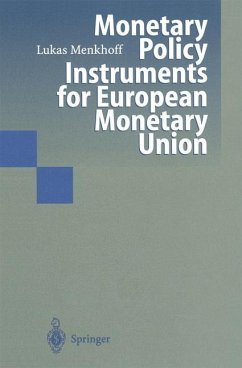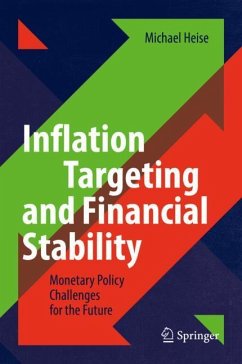
Money Stock Control and Inflation Targeting in Germany
A State Space Modelling Approach to the Bundesbank's Operating Procedures and Intermediate Strategy

PAYBACK Punkte
20 °P sammeln!
The book considers issues relevant to the European Central Bank in refining and communicating its strategy. It offers a historical assessment of the Bundesbank's strategy of monetary targeting conducted from 1974 to 1998. In contrast to several other prominent studies it is argued that money played a flexible but very important role in the conduct of its policy. It also explores the implications of the identified monetary policy regime in the context of various theories of the money supply process.The empirical analysis conducted in this study is based on a linear state space modelling approach which offers an appealing and direct representation of common stochastic trends. The framework is less restrictive and it is encompassing in that it does not construe the persistent dynamics as being driven by pure random walk components.
1.1 Intermediate strategies for monetary policy The launch of a single European currency in January 1999 has been sparking a heated debate over what strategy the European Central Bank's policy should be based on so as to distribute and maintain monetary stability in Europe. In order to pass the Bundesbank's reputation as a tough inflation fighter on to the European Central Bank there have been strong efforts to make the ECB a close copy of the Bundesbank. It might be surmised that there will be a lot of similarities in its intermediate strategies. Among other indicators, the ECB's policy will be based on the growth rate of a broad monetary aggregate consistent with its definition of price stability. As a key instrument in the new central bank's instruments, REPO operations will constitute the main refinancing source of private banks and, in addition, minimum reserve requirements have been introduced to facilitate the authority's command over the banking sector's liquidity by means of stabilising the demand for central bank money. After having introduced monetary targeting in the 1970s, in the 1980s, the Bank of England and the Fed soon abandoned it again, because of distor tions from financial innovations and currency substitution. But the Bundes bank strongly defended its intermediate strategy of monetary targeting and advocated its implementation in the European System of Central Banks.














